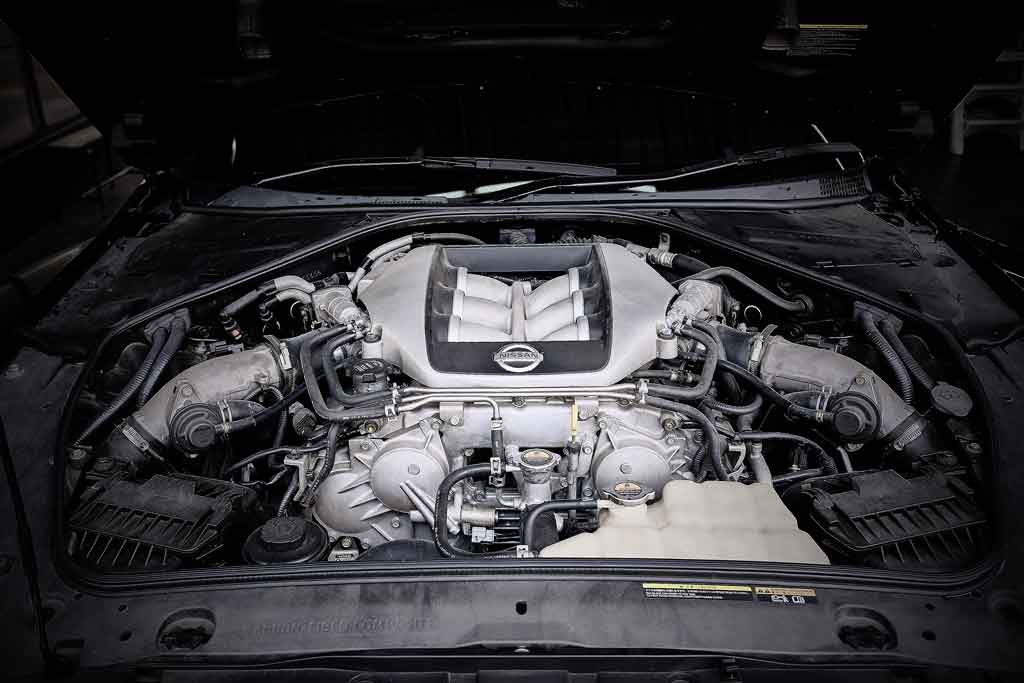Nissan Motor Company’s VQ series of engines are used in the automakers’ sedans, trucks, sport utility vehicles, and crossover utility vehicles. The VQ series engine is also used in some Infiniti vehicles as well. If you haven’t heard of this engine series or only have a superficial understanding of it, you’ll be interested to know the series is the successor to the original Nissan VG engines.
Do some digging into the Nissan VQ engine series and you will find it is listed among the industry’s best for good reason. In fact, the engine series has been highlighted for its merits by the popular Ward’s 10 Best Engines list nearly every year of its existence. This is the lone engine series to have made the list every single year that the award has been presented. Let’s take a closer look at what the VQ series engines are really all about.
VQ Basics

Nissan’s VQ engines are piston-operated, featuring six cylinders. The engine consists of an aluminum block design highlighted by aluminum heads and 4-valve engineering. These engines originally contained the automaker’s MPFI system, an acronym that is short for multi-point fuel injection. This system is sequential in design. The engine series later advanced to a version with variable valve timing including direct fuel injection in place of MPFI. Examples of Nissan vehicles featuring the VQ series engines include the company’s luxurious Maxima, the affordably priced Altima sedan, the uber-popular sporty 350Z roadster, the Quest minivan, and the utilitarian Murano.
The VQ Series’ Road to Success
It is no secret that competing in the auto industry is a never-ending race to one-up other automakers with the latest technology and engineering prowess. This heated competition is a large part of the reason why Nissan’s VQ series engines took a backseat to the competition after several strong years. In fact, the automaker’s engineers took eight years off from the VQ series after the engine line failed to compete in terms of fuel economy and refinement.
The first-ever Nissan VQ engine hit the market way back in 1994. Originally featured in the Nissan Maxima and also the Infiniti i30, this all-aluminum V6 engine was available with 2.0 liter, 2.5 liter, and 3.0-liter displacements. The 3.0-liter displacement VQ provided 205 pound-feet of torque along with 190 horses of power. The compact engine was carried with ease thanks to its lightweight components, two-way cooling design, molybdenum pistons, and micro-finished crankshaft.
The return of the Nissan VQ series engine has been received with considerable fanfare. The reborn VQ engines are that much more efficient in terms of engine operation as well as fuel economy. The engine series now adheres to emissions regulations including the mobile source air toxic emissions standards, or MSAT for short. The series’ engine noise, vibration, and harshness (NVH) are revered throughout the industry. An added bonus is the engines’ whopping 300 horses. This improvement has been made without reducing the quality or performance of engine components in the slightest. The engine’s NVH is superior to that of the 2016 Maxima as well as the 6-cylinder VQ with 290 horses used in the 2015 model. In short, Nissan’s VQ series engine is back and better than ever.
Breaking Down the VQ Series Engine
Wheel around town in a Nissan carrying a VQ series engine and you will find it is smooth, quiet, and performs better than expected. The refreshed VQ series engine features a completely revised intake manifold highlighted by abbreviated and thicker runners. The superior flow in the head/combustion chambers provides higher output and vibration reduction thanks to its stiffened oil pan.
The reduction in friction combined with intermediate locking valve timing enhances combustion. The engines’ exhaust valves prevent heat from compromising combustion chambers. The result is a responsive yet lightweight delivery of power perfect for continuously variable transmissions. The engine’s superior midrange ensures superior performance even when reaching 6,600+ RPMs.
The Silky Smooth Engine Every Gearhead Appreciates
As every gearhead knows, engine performance is at the core of automotive functionality and on-road performance. Nissan’s VQ engines are revered throughout the industry for their smoothness, elite balance, and unfaltering functionality, regardless of exterior conditions. The engine’s underlying engineering is the root of its success. Designed with a displacement in the range of 2.0 liters to 4.0 liters, the VQ engines have been modernized to provide extra duty in all different types of Nissan vehicles. Nissan engineers have mastered the delicate balance between efficiency and performance without sacrificing NVH levels.
Only the most well-read automotive expert is aware that Nissan engineers have gone to the extent of precisely optimizing the port shape of the VQ series engine cylinder head to elevate the tumble flow while simultaneously decreasing flow restriction. The automaker’s engineers accomplished this impressive feat with the implementation of complex fluid dynamics. In addition to an expanded event-angle cam phaser exhaust as well as an exhaust catalyst with low-flow restriction, the engines’ valve timing has also been precision-tuned.
Now that you have the inside scoop on the Nissan VQ series engines, it’s time to fire up your ride and envision the inner workings of your Nissan VQ series engine while cruising through town.



